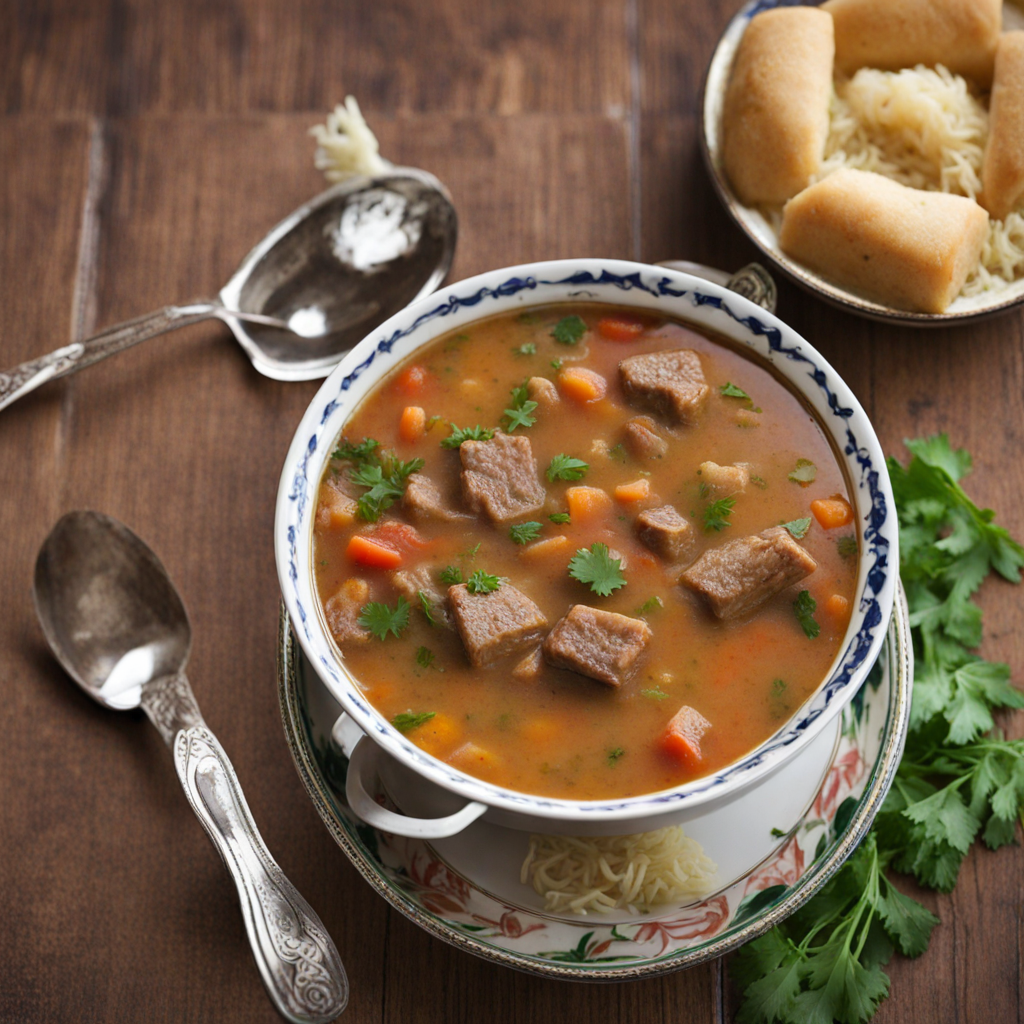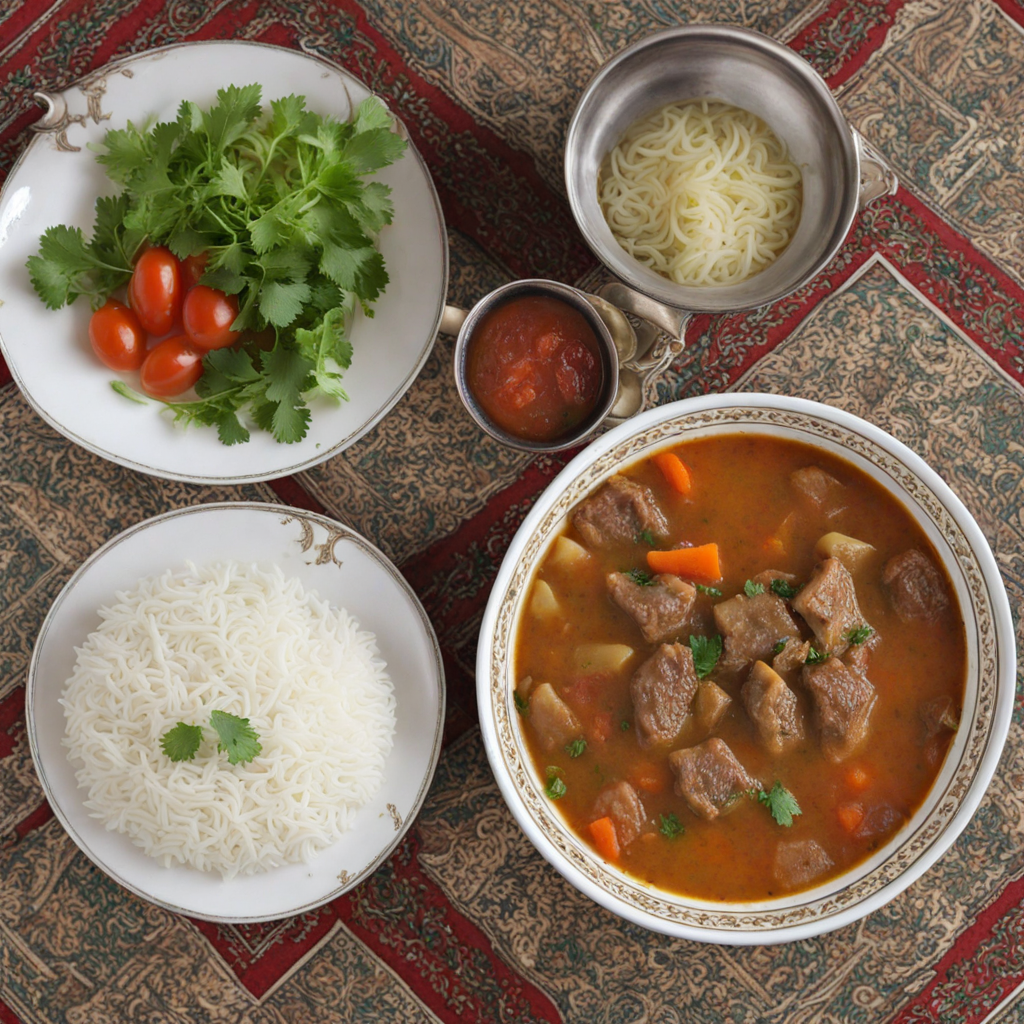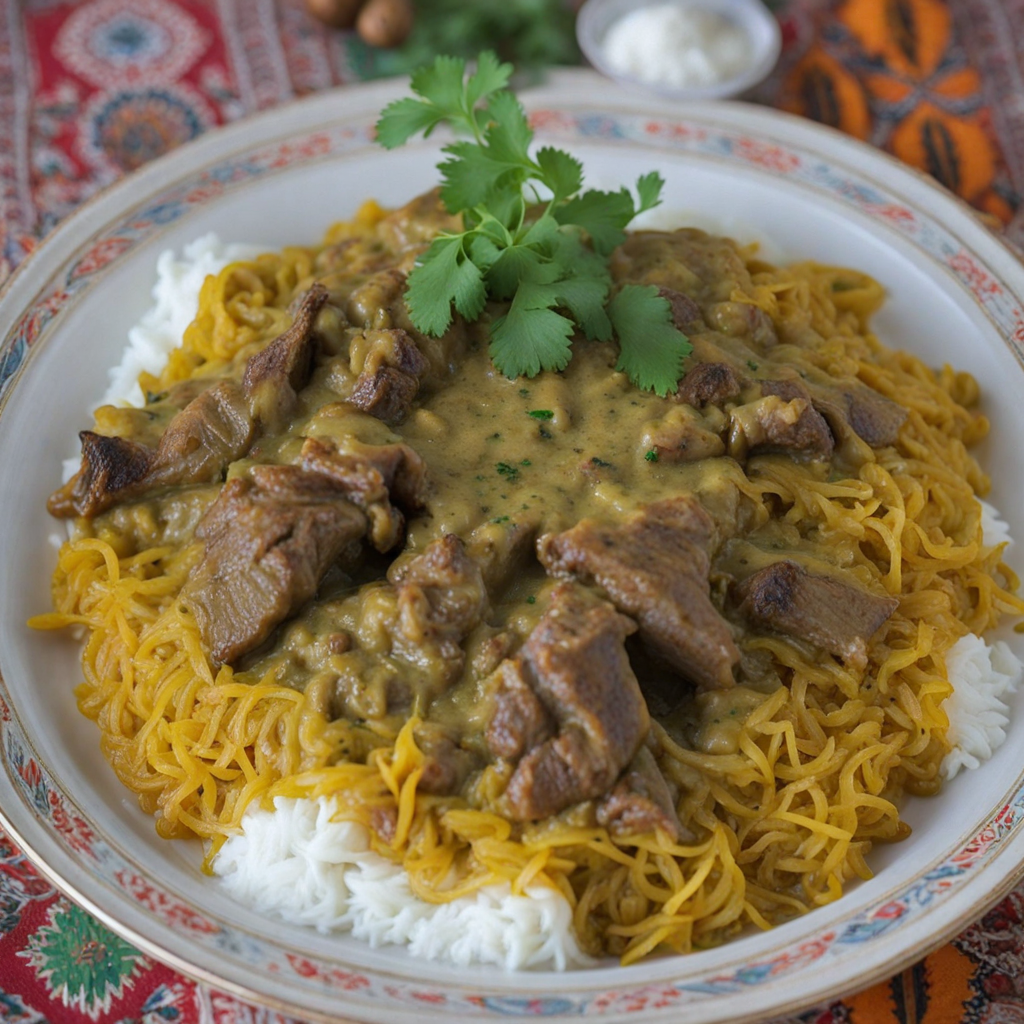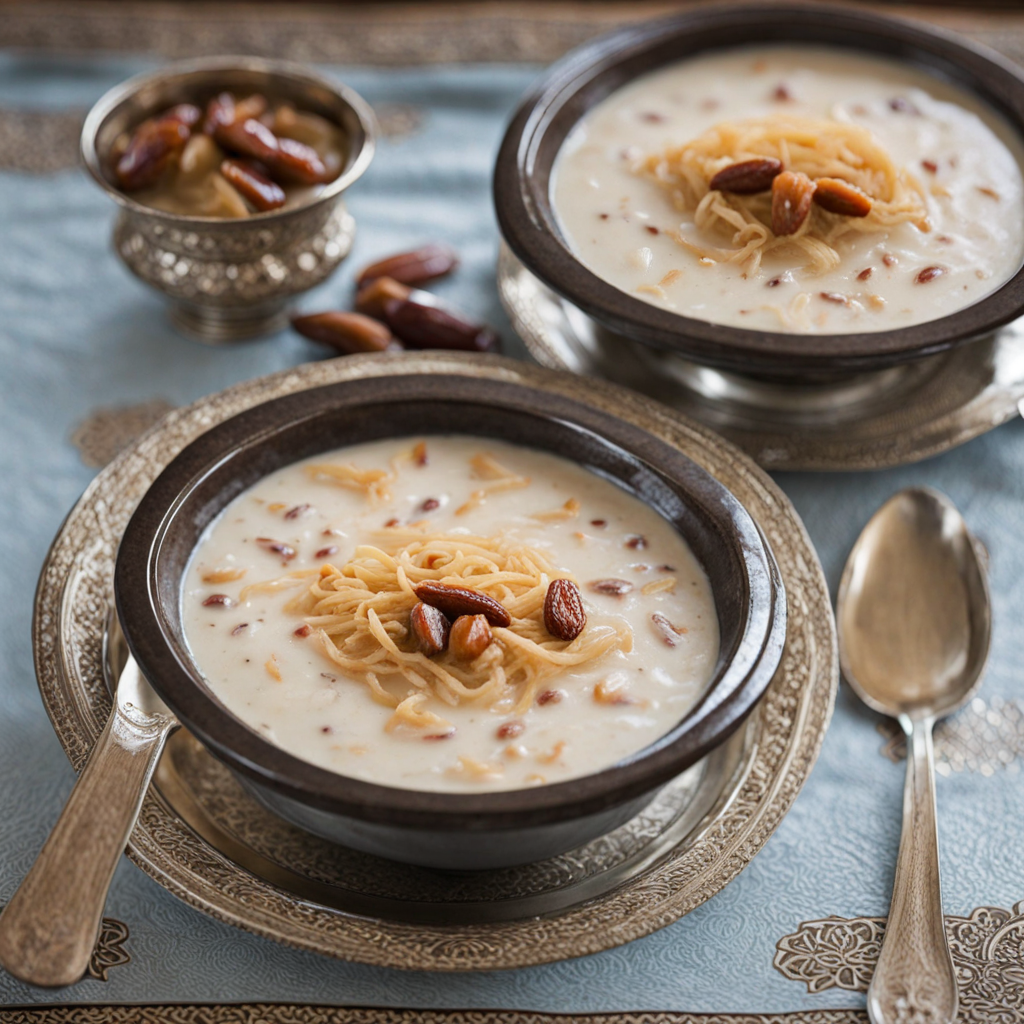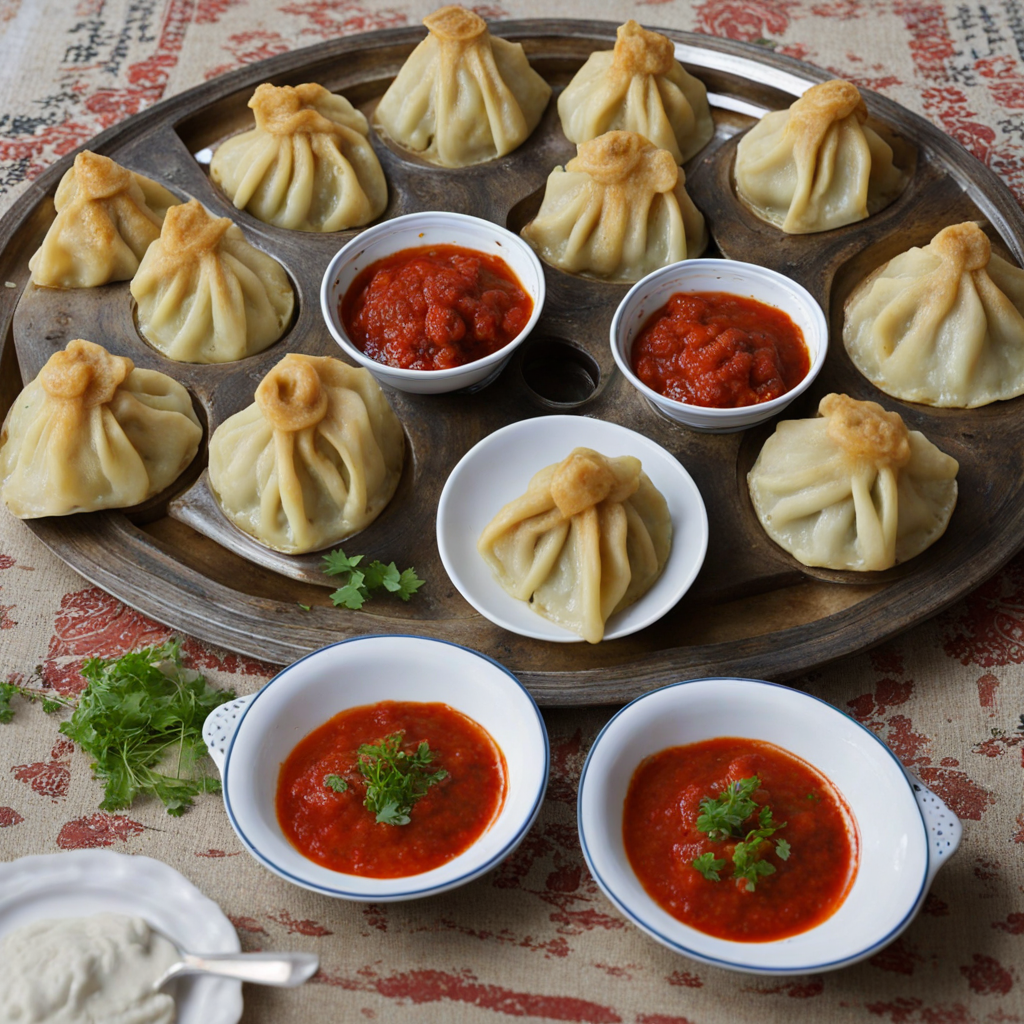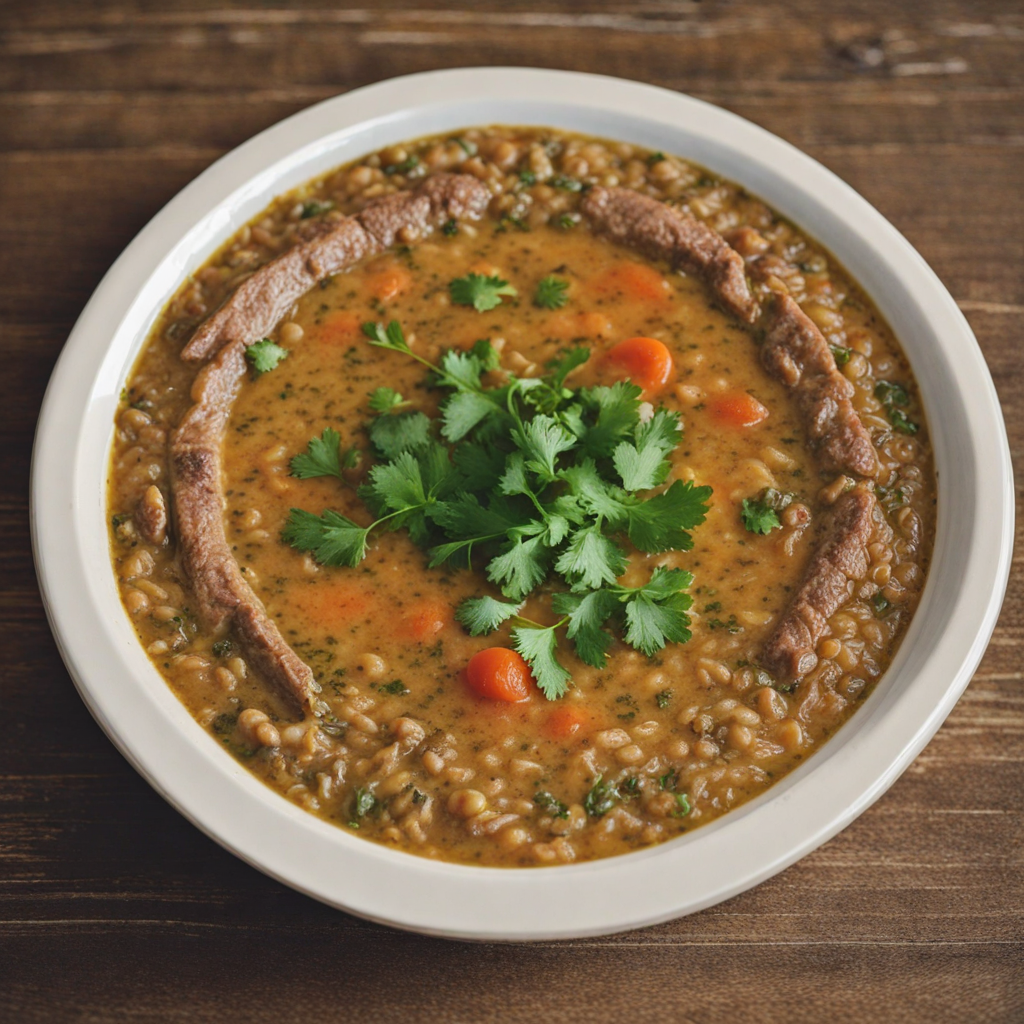Shorwa
Shorwa is a traditional Afghan dish that embodies the rich culinary heritage of Afghanistan, offering a hearty blend of flavors and textures. At its core, Shorwa is a savory soup, often made with tender pieces of meat—commonly lamb or beef—that are slow-cooked to perfection. The meat is accompanied by a medley of vegetables, such as carrots, potatoes, and chickpeas, which contribute both flavor and nutritional value. The broth is usually seasoned with various spices, including cumin, coriander, and turmeric, imparting a warmth and depth that is characteristic of Afghan cuisine. One of the standout features of Shorwa is its aromatic quality, which comes from the careful layering of spices and herbs. Fresh ingredients like cilantro and mint are often added towards the end of cooking, providing a refreshing contrast to the rich, meaty base. The dish is typically served with a side of bread, such as naan, allowing diners to soak up the flavorful broth. This combination of textures—from the tender meat to the soft vegetables—creates a comforting bowl that is perfect for sharing with family and friends. Shorwa is not just a meal; it is a reflection of Afghan hospitality and culture. It is often prepared for special occasions and gatherings, symbolizing warmth and togetherness. The communal aspect of enjoying Shorwa, where everyone gathers around a shared pot, enhances the experience, making it not only about the food itself but also about the connections formed around it. For anyone looking to explore new culinary horizons, Shorwa promises a delightful journey into the heart of Afghan flavors.
How It Became This Dish
Origins of شوروا شوروا, a traditional Afghan dish, has roots deeply embedded in the country’s rich cultural tapestry. The dish is believed to have originated centuries ago, during a time when nomadic tribes traversed the rugged terrains of Afghanistan. The nomadic lifestyle necessitated the creation of hearty meals that could sustain them for long periods. شوروا, which translates to “broth” or “soup” in Persian, combines various ingredients like meat, vegetables, and spices, making it an ideal, nourishing meal for those on the move. The ingredients of شوروا reflect the diverse geography of Afghanistan. The fertile valleys of the country allow for a variety of vegetables, while the mountainous regions provide access to different types of meat. The use of local herbs and spices in شوروا showcases the culinary ingenuity of Afghan cooks who have adapted their recipes according to seasonal availability and regional preferences. \n Cultural Significance In Afghan culture, food is much more than sustenance; it is an expression of hospitality, community, and tradition. شوروا is often served during communal gatherings, celebrations, and religious occasions, symbolizing unity and sharing. The preparation and consumption of شوروا can often be a communal affair, where family and friends come together to cook and enjoy the meal, reinforcing social bonds. During significant events, such as weddings or religious holidays like Eid, شوروا takes center stage on the dining table. It is not just a dish but a ritual that brings people together, allowing them to share stories, laughter, and memories. The communal aspect of شوروا reflects the broader Afghan values of generosity and hospitality, where offering food to guests is a sign of respect and honor. \n Ingredients and Variations The beauty of شوروا lies in its versatility. Traditionally, the dish is made with lamb or beef, but variations exist depending on personal preferences or regional availability. In some areas, chicken or even vegetarian versions are made using lentils and an assortment of vegetables. Common ingredients include potatoes, carrots, spinach, and chickpeas, all simmered in a rich broth flavored with spices such as cumin, coriander, and turmeric. Different provinces in Afghanistan have their unique takes on شوروا, influenced by their local ingredients and culinary traditions. For instance, in the northern regions, شوروا might be richer and include more spices, reflecting the colder climate and the need for hearty meals. In contrast, southern regions may favor lighter versions, with an emphasis on fresh herbs and vegetables. These regional variations not only add diversity to the dish but also highlight the cultural richness of Afghanistan. \n Historical Development As Afghanistan’s history has unfolded, so too has the story of شوروا. The dish likely saw its first major evolution during the reign of the Great Timur in the 14th century, when the Silk Road facilitated cultural exchange between East and West. This interaction introduced new ingredients and cooking techniques, which influenced Afghan cuisine, including شوروا. The incorporation of spices such as saffron and cardamom, previously less common in Afghan cooking, showcased this blend of influences. The 19th century marked another pivotal period for شوروا, as Afghanistan underwent significant political and social changes. The influence of British colonialism brought new culinary elements, leading to further adaptations of traditional dishes. The introduction of canned goods and preserved foods changed the way شوروا was prepared, allowing for quicker preparation times and longer shelf life. Despite these changes, the essence of شوروا remained intact, symbolizing resilience and adaptability in Afghan culinary traditions. \n Modern-Day شوروا Today, شوروا continues to be a staple in Afghan households and restaurants, appreciated both locally and internationally. With the growing interest in Afghan cuisine worldwide, شوروا has found its place on global dining tables. Chefs and home cooks alike experiment with the dish, adding contemporary twists while honoring traditional flavors. The rise of diaspora communities has also contributed to the evolution of شوروا. Afghans living abroad have adapted the dish to incorporate local ingredients while maintaining its core essence. This cross-cultural culinary exchange has not only preserved the dish but allowed it to flourish in new environments. As a result, شوروا now serves as a bridge between generations and cultures, connecting Afghan expatriates to their homeland while introducing new audiences to its rich flavors. \n Conclusion In essence, شوروا is more than just a dish; it embodies the spirit of Afghanistan. Each bowl of شوروا tells a story of cultural heritage, resilience, and community. As it continues to evolve, it remains a significant part of Afghan identity, celebrating the country’s history and its people. Whether enjoyed at a family gathering or in a restaurant halfway across the world, شوروا serves as a delicious reminder of Afghanistan’s enduring culinary legacy.
You may like
Discover local flavors from Afghanistan


